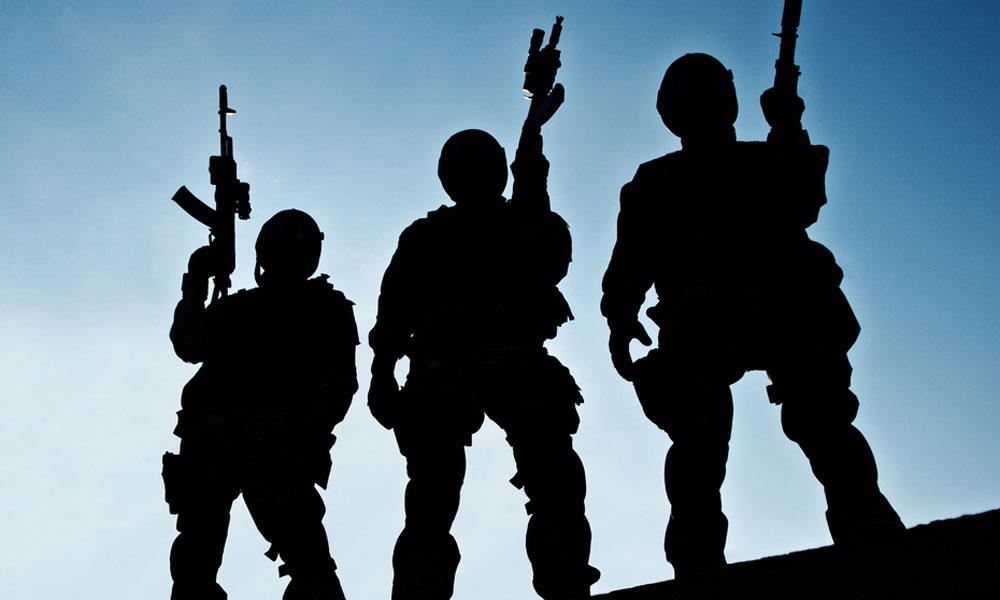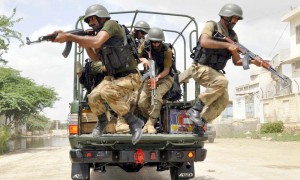Ten years after the war in Iraq began, journalists reflect on an all-consuming, fascinating and sometimes career-defining assignment.
By Jackie Spinner
From the AJR Archive
Jane Arraf missed the Persian Gulf War in 1990, sidelined in Jordan by Reuters because she was a woman.
She got to Iraq only after Operation Desert Storm had ended but quickly was enraptured by the country. “It was the most fascinating place I’d ever been and incredibly difficult to work in as a journalist,” she recalls. CNN picked Arraf to open its Baghdad bureau in 1998, and she has reported there off and on (mostly on) ever since — through the U.S. invasion in 2003 and a period of unprecedented danger and risk that followed in which journalists often became the target and sometimes the headline of an unraveling story of violence.
Yet Jane Arraf, the grande dame of the shrinking Baghdad press corps, a freelancer who now reports primarily for Al Jazeera English and the Christian Science Monitor, can’t quite bring herself to leave Iraq, even if bigger stories are now coming out of Syria and Egypt and even as most of the other news bureaus have closed and the foreign press corps has dwindled to a handful of regulars.
“As a freelance journalist, I have conversations with some editors who find it hard to get excited about the country unless things are exploding here,” Arraf said in a recent interview from Iraq. “I think like other undercovered countries, though, it’s difficult to figure out what the stories are unless you’re here. Iraqis have been through so much that almost every conversation leads you to a compelling story. And I think readers and viewers in general respond to good storytelling no matter what the subject.”
After a decade of covering Iraq, U.S. news organizations have mostly moved on to other stories, although the 10-year anniversary of the American-led invasion prompted a spike in coverage. Ned Parker of the Los Angeles Times returned in February to write about growing anger from Iraq’s Sunni population toward Prime Minister Nouri al-Maliki. Liz Sly, the former Baghdad bureau chief for the Washington Post who is now based in Beirut, visited Fallujah to write about Arab Spring-style protests taking place, a story Arraf also reported for the Monitor. NPR’s Kelly McEvers, who reported from Iraq as the final U.S. troops departed, returned to report on sectarian tensions.
Only wire services and the pan-Arab broadcasters still operate permanent bureaus in Iraq. Tim Arango, the New York Times Baghdad bureau chief since 2010, now splits his time between Turkey and Iraq.
“The story really shifted after the final American troops left at the end of 2011,” Arango said from Istanbul. “The story became Iraq on its own, and what the country will become, rather than an American policy story, although there is still some of that given the sizable U.S. diplomatic presence.”
Major news organizations, which once spent millions covering Iraq, employing dozens of guards, cooks, drivers, translators and housekeepers, now share space in smaller quarters for the occasional visiting correspondent, relying primarily on Iraqi stringers for breaking news. The Times shares its quarters with NPR and the BBC. The Washington Post sublets space in a much smaller house than it once occupied.
“Our budget for Iraq now is a very small fraction” of what it was, says Douglas Jehl, the Post’s foreign editor. “That has helped to ease the strain on foreign coverage.” Jehl says the paper is much more focused on the rest of the region now, with correspondents based in Lebanon and Egypt. “For a long period, we missed a good bit of the rest of the Middle East, or at least neglected it,” he says. “Our only bureau in the Middle East was Baghdad.”
Over a decade, the Post sent more than 70 reporters and photographers to Iraq (I was one of them), giving its entire staff unprecedented opportunity to cover a coveted overseas assignment. Last year, the Post honored all of its journalists who covered the wars in Iraq and Afghanistan with its Eugene Meyer Award for service. Many of them no longer work at the paper, including former Baghdad bureau chiefs Karl Vick (Time magazine), Ellen Knickmeyer (Wall Street Journal) and Leila Fadel (NPR).
“We have a lot more people who have been exposed to the Middle East, to combat, to the challenges of being a foreign correspondent,” says Jehl, who became the Post’s foreign editor in 2009. “That’s made people who had that opportunity better reporters, with bigger horizons, with a range of understanding to the very real perils that exist in journalism.”
For the Post, the perils were high. Michael Kelly, editor-at-large for The Atlantic and a Post columnist, was the first journalist killed during the invasion. He died in April 2003 outside of Baghdad while embedded with the U.S. Army. Salih Saif Aldin, an Iraqi correspondent for the Post, was killed in October 2007. The New York Times also lost two of its Iraqi staff members, Khalid W. Hassan and Fakher Haider. In fact, the dangers became so great for Iraqis working for Western news organizations that many of them have now left Iraq and sought asylum in the United States or the United Kingdom.
In accepting the Meyer award on behalf of his colleagues, Post senior correspondent and associate editor Rajiv Chandrasekaran noted the risks of working from Iraq, particularly at the height of the violence from 2004 to 2007.
“I could spend an hour recounting the near-death experiences that our colleagues have faced, the repeated attacks on our bureau, what it looks like to see people get blown up in front of you,” said Chandrasekaran, who opened the Post’s Baghdad bureau in 2003. “But I won’t. Those who have covered the wars, some longer than others, have made enormous sacrifices, and they will bear indelible memories, some of them scarring, for the rest of their lives.”
Anthony Shadid, also a Baghdad bureau chief for the Post, died last year in Syria while reporting for the New York Times. An asthma attack during a risky journey inside Syria was the apparent cause. He won two Pulitzer Prizes for his coverage of Iraq for the Post. Steve Fainaru, once a sports reporter, won a Pulitzer for his investigation of private security contractors in Iraq.
“I had been fascinated with the mercenary aspect of the war, the private security contractors,” says Fainaru, who spent a year covering the military before he started looking into the story that won the Pulitzer. “But I didn’t really know much about it. You’d see them everywhere when you traveled with the military, like Mad Max come to life. It summed up so many things about the war for me: the outsourcing of the violence, the lack of accountability, the incredible amounts of money. The fact that a multibillion-dollar private security industry sprung up overnight in Iraq really told you a lot about the war and how it was being conducted.”
Iraq was the story for an up-and-coming cadre of reporters, including young Iraqis employed by Western news organizations as translators and stringers. Many reporters made a name for themselves in Iraq and rose through the ranks of their newsrooms. Arwa Damon hustled as a freelance producer in Iraq for three years before stepping full time in front of the camera. She is now a senior international correspondent for CNN, based in Beirut.
“The Iraq story created a new generation of journalists, myself included,” says Omar Fekeiki, an Iraqi who worked for the Washington Post from 2003 to 2006. He earned a master’s in journalism from the University of California, Berkeley in 2008 and now works as an assignment editor for Radio Sawa, a U.S.-supported Arab-language station in Washington, D.C. “Readers gravitated to the Iraq story in Arab and foreign media outlets, and we had a great chance to shine.”
James Janega rotated through the Chicago Tribune’s Baghdad bureau as a metro reporter from 2004 to 2007. He is now the manager of Trib Nation, an interactive blog that connects the newspaper with the communities it covers.
“Iraq was the big foreign policy story for the United States, and I got to share a little bit of it,” Janega says. “I still carry the lessons that come from growing into a bigger responsibility — and the certain knowledge that the world benefits from dedicated journalists bearing witness to important stories. What a chance to have worked with them.”
Iraq was risky for anyone covering the story, but most especially for Iraqis. Iraq was the most dangerous country in the world for journalists from 2003 through 2008, with 136 killed, according to the Committee to Protect Journalists.
During the height of the violence and targeting of journalists, between 2004 and 2007, Western reporters had to bunker down in their bureaus, increasingly relying on Iraqis to go to places that were too chancy. (See “Out of Reach,” April/May 2006.) For many journalists, the turning point was the New Year’s Eve bombing at the Nabil Restaurant in Baghdad at the end of 2003, which killed five people and injured 35, including three correspondents for the Los Angeles Times.
The threat of kidnapping was pervasive — and real. American freelance journalist Jill Carroll was working for the Christian Science Monitor when she was kidnapped in 2006 and held for three months. NPR’s Soraya Sarhaddi Nelson was kidnapped by the Mahdi Army in Iraq, accused of being a spy and waited six hours for her execution before being released. Others survived mortar attacks and bombings, some barely, some not at all. In January 2006, ABC anchorman Bob Woodruff was critically injured in a roadside bomb attack in Iraq while embedded with U.S. troops. Kimberly Dozier, now a correspondent for the Associated Press, also was seriously wounded in a car bomb attack that year while reporting for CBS News. The attack killed two CBS crew members, an Iraqi translator and a U.S. soldier.
“It is extremely difficult to get pictures under gunfire,” says Dominic Di-Natale, who was world affairs correspondent for Fox News in Iraq. “The vulnerability really is to your cameraman more than you. There is no way you can hide.”
Dexter Filkins was a correspondent with the New York Times in Iraq from March 2003 until September 2006 and again in 2007 and 2008. He wrote the best-selling book “The Forever War,” about the fighting in Iraq and Afghanistan.
“I covered the invasion and aftermath [in Iraq], the occupation, the end of the occupation, the insurgency, the Battle of Fallujah, the elections and the civil war,” says Filkins, now a staff writer for The New Yorker. “I couldn’t do it anymore. I was exhausted in every way — physically and emotionally. I’d seen too much death. The story was too consuming. It had eaten up everything else in my life.”
For the initial invasion in March 2003, more than 700 journalists embedded with a military unit to cover the war. In November 2004, more than 90 journalists embedded for the Battle of Fallujah. At the start of 2006, more than 200 journalists were still embedded with military units. But by the end of that year, only 21 were embedded.
Army Col. Barry Johnson did four tours, or 52 months, in Iraq, in various top public affairs capacities, starting in 2004 as the Army’s spokesman for detention operations during the Abu Ghraib prison scandal. He later headed the Combined Press Information Center that issued credentials to journalists and then served as senior media adviser to Gen. Lloyd Austin III, commander of the departing U.S. forces.
“Frankly, I’d say I got well over half of my understanding of what was happening in the country from the press corps,” says Johnson, who mostly enjoyed an affable, easy relationship with the press.
Johnson, who is retiring this spring, says the embed process generally worked as it was designed, giving journalists fairly unrestricted access and greater understanding of military operations — from the military’s perspective, of course.
But as the country became more perilous for travel, journalists turned more and more to the military for rides. As that happened, commanders became less willing to allow reporters to follow their troops, Johnson says.
“We had some issues with being used a transportation service,” he says. “Because of that, embeds built some of these walls that are now between the military and the media. The media were not investing time in the story, and that was never really how we envisioned the embed process.”
Ironically, the downshift in foreign journalists reporting from Iraq comes at a time when reporters are freer to roam the country. No journalists have died in Iraq since 2011, when five journalists were killed.
Prashant Rao, Baghdad bureau chief for Agence France-Presse, recently went out for a late night meal in the capital with AFP colleague Ammar Karim, Ned Parker of the Los Angeles Times and Ben Lando, who runs the Iraq Oil Report (see Drop Cap, page 6). After Rao and Parker posted photos of the get-together on their Facebook pages, colleagues from a different era, the era of living and reporting behind bureau walls and traveling the country only through military embeds, commented with yearning and envy. “That’s so 2004,” one quipped. “Makes me a bit homesick,” another journalist wrote.
Those moments are one of the reasons Arraf has stayed. “It’s possible now..if you spend enough time here to feel as if you actually live in the city,” she says. “It’s safe enough to see Iraqi friends, wander around the book market and go to restaurants. On a Thursday night recently, I was at a pizza place where people were waiting in line to get in. This city has always had a really vibrant social life, even when it disappeared behind the walls of social clubs or retreated to people’s homes. With the kind of security..a lot of us had, I think most reporters were cut off from the country they were reporting on — not allowed to go out, not even allowed to invite Iraqis in many cases. The saddest thing was that not everyone knew there was always an amazing city there.”
Rao, who has been AFP bureau chief since June 2011 after first going to Iraq in 2009, says Iraq remains an important story, particularly for the wire service’s Middle East clients. “It’s cliché to say, but Iraq is at the fault lines of the change in the Middle East,” he says.
Rao says it is safer to report now in Iraq but not necessarily easier. “We’re able to get out a lot more and do our own reporting, but there’s a crazy level of bureaucracy and permits, different permits from different authorities,” he says.
John Daniszewski, vice president and senior managing editor for the AP, says that Iraq remains one of the most important countries in the region, in part because of its oil reserves and its long border with Syria and Iran.
“It’s a key player in the Middle East, and the Middle East as a region is important to the rest of the world,” says Daniszewski, who reported from Iraq for the Los Angeles Times before joining the AP. “There’s still an appetite for news. People want to know how the country is doing. In some ways, when there aren’t so many correspondents there, it’s even more important for us to be there.”
Fekeiki, the former Washington Post correspondent who is now at Radio Sawa, says the Arab world is still intensely interested in what is happening in Iraq.
“Arab and Iraqi media have never stopped reporting on Iraq, or focusing on the news from Iraq,” he says. “It is still a front-page story in most of the major Arab newspapers.” He disagrees that readers and viewers in the United States have grown tired of the story. “The audience is interested in what we give them,” he says. “When we give less news from Iraq, we’re telling them there is nothing of any importance there. So, we’re directing them to be tired of the Iraq story.”
Iraq remains a risky place, even if the risks have diminished. It also is costly, particularly for freelance journalists.
Ben Brody, who was an enlisted U.S. Army photographer in Iraq and Afghanistan from 2003 to 2008, has a unique perspective on the country, as a soldier who now works as a civilian freelance journalist, primarily for GlobalPost (see “Foreign Affairs,” April/May 2008). When he travels now, he returns to Afghanistan and not to Iraq, he says.
“I’m sure I could successfully pitch an Iraq story and find an outlet for it, maybe GlobalPost, but I’m unsure that I could recoup my expenses,” Brody says. “One advantage to working in Iraq is that very few reporters are there working for Western audiences, so it’s likely your material will be unique and exclusive. The disadvantages are everything else: It’s a very difficult place to work as a civilian now, both from a bureaucratic standpoint and from a security standpoint. If you manage to get the necessary advance permission to photograph something, then you’ve also publicized your itinerary and exposed yourself to an increased risk of attack or kidnapping.”
Andrea Bruce, a photographer for Amsterdam-based Noor Images who documented Iraq on staff for the Washington Post and later for the New York Times, also mostly works from Afghanistan now. “It seems the U.S. readers, and therefore editors, have no desire to hear about a place that was the root of so much frustration,” she says. “I feel the country is a mystery to us once again.”
As a photographer in Iraq, she says her biggest challenge was trying to get viewers to connect to Iraqis or the U.S. military on a more intimate level and “to empathize and understand their cultures. If they can’t relate, in some way, then they won’t care about their suffering or the outcome of the country.”
Amelia Newcomb, international editor for the Christian Science Monitor, says Web analytics that track page views show declining interest by American readers in stories from Iraq. She says that makes it harder to justify devoting resources to the country, even though she remains committed to covering it and says she eagerly accepts dispatches from Arraf when she’s not busy reporting for Al Jazeera. “I want to keep up with it, but you just have to be judicious,” she says.
Newcomb says that following Carroll’s kidnapping, the Monitor changed the way it works with freelancers, allowing only those with experience and hostile environment training to write dispatches from conflict zones. “We don’t take any copy in war zones from people we haven’t worked with before,” she says.
Iraq continues to have a hold on the hundreds of American journalists who have covered the embattled nation over the past decade. Iraq is an assignment that shaped many, for better or for worse, one that got under their skin. “There was a time when it felt inconceivable not to go,” Fainaru says. “And then, suddenly, it didn’t, for a million reasons but mostly my son and my family.”
Di-Natale, the Fox correspondent, likened the sound of helicopter rotors to a heartbeat, a reminder to him how alive he felt chasing a story that brought him so close to death.
He was driving past Camp Pendleton outside San Diego recently when he heard a Marine Chinook helicopter traveling above him during an exercise. “I had to pull over,” he says. “I closed my eyes, and it took me back.”
Di-Natale, who reported from Iraq for the BBC, Condé Nast and then Fox for much of the time from 2004 through 2010, says he misses the war, misses the action.
“Fox covered the war with more enthusiasm and more resources than most of the other broadcasters,” he says. “As a result of that, people loved the channel or hated the channel, but either way they were watching. I felt a great sense of responsibility.”
Hannah Allam, who was Baghdad bureau chief for Knight Ridder (now McClatchy) from the end of 2003 through 2005, continued to cover the story after she left, returning from Cairo after becoming bureau chief there. She spent much of 2010 in Iraq while pregnant with her son.
“I was lucky in that my editors always fought to keep the Iraq story in our papers, so I’ve always had a great deal of support,” says Allam, now McClatchy’s foreign affairs correspondent based in Washington. “But, yes, after the U.S. military withdrawal and even during the winding-down period, it became much harder to get people excited about Iraq stories. There were only so many ways to write about suicide bombings, government collapses, the rise of the Sadrists, the marginalization of the Sunnis, the Iranian influence, the huge and cloistered U.S. Embassy, the oil industry picking up, disputed mixed-sect provinces/neighborhoods, etc., etc. All those tropes had been explored in depth, and it became very difficult to find something new and fresh to cover in the country.”
Orly Halpern is an Israeli-American journalist who worked as a freelancer in Iraq in 2003 and 2004 and was kidnapped near Fallujah in April 2004. She was released later the same day. Now based in Jerusalem, she has not reported from Iraq since September 2004.
“I missed Iraq terribly, and I followed the story closely every day for months and months,” she says. “I felt that it was the story I cared about, that it was my story, and I felt very connected to the people and the place. I remained in regular contact with people I cared about from there.”
Some journalists ultimately forced themselves to walk away, to move on to other assignments or get lost. Iraq was a story that could totally consume a journalist until, as Filkins notes, nothing else was left.
“It was a hard decision to leave,” says Larry Kaplow, who was based in Iraq for Cox Newspapers from March 2003 until 2007, when he started working for Newsweek’s Baghdad bureau. He was laid off in 2009, left Iraq and then returned briefly in 2010 to help report an episode for “This American Life.” Kaplow is now a freelancer in Mexico City.
“I still read about the Mideast obsessively, but I’m glad to have a break from all the complicated logistical, security and bureaucratic burdens of Iraq coverage — like worrying anytime you send your fixer somewhere, scrambling for visas, filling out embed forms,” he says. “I looked at Iraq like a big problem-solving puzzle: How do we safely get to the things we need to report? But I needed a break from it.”
He adds, “I could go back someday. I miss the place.”
Jackie Spinner has reported on the Middle East since 2004. She was a staff writer for the Washington Post for 14 years and covered the wars in Iraq and Afghanistan for the paper. She is the author of “Tell Them I Didn’t Cry: A Young Journalist’s Story of Joy, Loss, and Survival in Iraq.” Spinner is now an assistant professor of journalism at Columbia College Chicago. She wrote about launching a student newspaper in Iraq in AJR’s Spring 2011 issue.









Leave a Comment